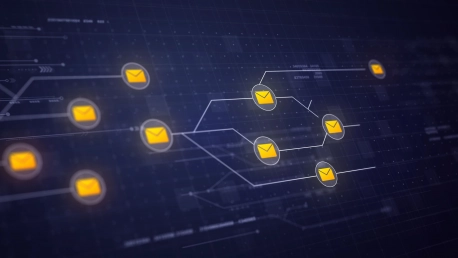Email security is an ever-evolving battlefield. With artificial intelligence (AI) entering the fray, the game has changed significantly. AI’s role in email protection is pivotal due to its capabilities for quick analysis and problem-solving. However, this technological advancement serves as a boon and a bane. While AI systems can swiftly detect and neutralize threats, thus fortifying our email communications, they can equally enhance the arsenal of cybercriminals. These adversaries can exploit AI to orchestrate attacks with a level of sophistication previously unattainable. The dynamic nature of AI in email security means that it has become an invaluable tool in the ongoing quest to secure our digital communication channels. As such, the field of cybersecurity is in a perpetual arms race, with both security experts and cyber miscreants relentlessly upgrading their tactics through AI. Email, as a crucial aspect of our digital lives, has thus become a focal point for this technological tug-of-war, with its security hanging in the balance.
The Rise of AI-Enhanced Email Attacks
Crafting Convincing Phishing Attempts
Cyber offenders are increasingly utilizing artificial intelligence to craft phishing emails that are alarmingly similar to actual communications. This advanced use of AI undermines traditional security measures, as these emails can now bypass the grammar and spelling safeguards that were once indicative of suspicious messages. These AI-generated deceptions are well-orchestrated, leveraging personal details to enhance their authenticity and deceiving victims with a new level of finesse. They prey on trust, often appearing credible due to the personalized information embedded within, making them much more challenging to detect. In response, organizations must adapt by implementing more sophisticated cybersecurity tactics to combat these AI-powered threats. As AI continues to evolve, so too must the strategies employed to protect against its malicious applications in phishing attacks.
Business Email Compromise and Deepfakes
The dark world of cybercrime is becoming ever more sophisticated as advanced AI is exploited by cybercriminals to enhance their fraudulent schemes. Business email compromise (BEC) and spear-phishing attacks have been refined by the use of artificial intelligence that meticulously mimics victims’ communication styles, making scams alarmingly precise. This emergent threat is further compounded by the use of deepfakes—a troubling technology where audio and video can be manipulated to convincingly mimic the likeness and voice of trusted figures. In BEC scams, these hyper-realistic fakes serve as a powerful tool, bolstering the effectiveness of these deceptions. As such technologies continue to evolve, they introduce a new tier of risk, compelling individuals and organizations to adopt increasingly sophisticated security measures to protect against these evolving cyber threats.
Harnessing AI for Robust Email Security
Enhanced Detection and Threat Intelligence
AI is a formidable tool in the cybersecurity arsenal, equipping defense teams with sophisticated capabilities to preemptively spot and scrutinize suspicious email activities. Leveraging complex algorithms, AI systems scour incoming emails, identifying irregular behavior and content that may elude human detection. By processing information at remarkable speeds and with unparalleled accuracy, AI aids in intercepting potential cyber threats swiftly, providing invaluable time for organizations to mount an appropriate defensive response. Moreover, the self-improving nature of machine learning technology means that AI’s ability to discern and counteract cybercriminal techniques is in a state of continuous refinement. This ensures that security measures remain at the forefront of defense, ever-evolving to match the cunning and innovation of would-be attackers. With AI’s vigilance, the digital landscape is navigated with enhanced safety, mitigating risks and fortifying cyber resilience.
Accelerated Incident Response
AI’s role in email security is crucial, particularly when a threat emerges. It automates response protocols, enabling quick action to reduce harm. By swiftly sorting and prioritizing alerts, AI streamlines a strategy for defense, ensuring a well-allocated response during an attack. It can also handle simple threats on its own, allowing human teams to tackle complex security issues. This rapid-response capability is transformative, bolstering cyber defense teams’ capability to safeguard their domains.The dynamic between AI’s offensive and defensive applications in email security will continue to advance. The outcome of this digital arms race will determine the robustness of our cyber defenses. It’s imperative that we remain adaptable and inventive in our strategies. Clearly, the future of email security relies on a blend of both classic and modern methods, all sustained by a deep understanding of AI’s extensive possibilities.









